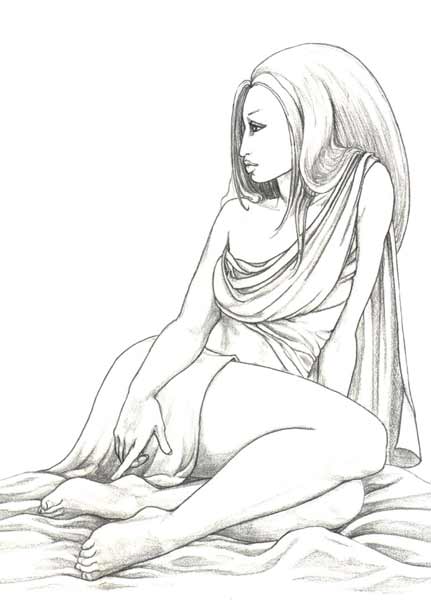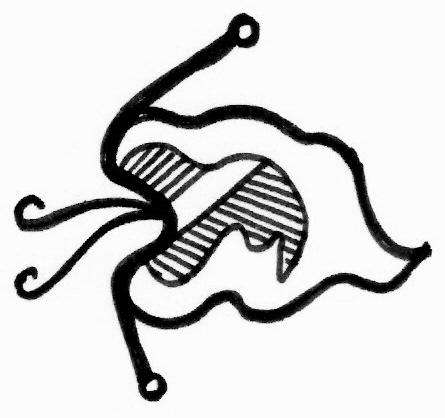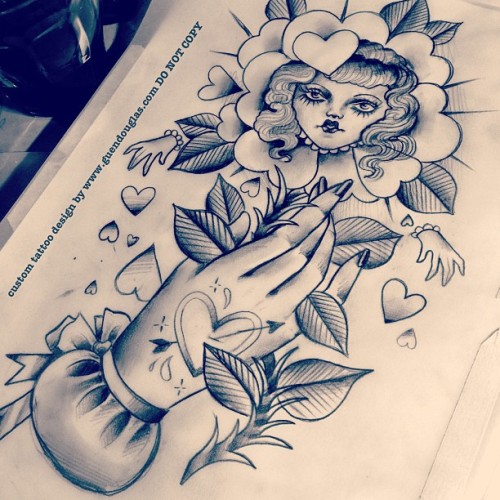Tattoo Sketches Biography
Source:- Google.com.pk
The Oxford English Dictionary gives the etymology of tattoo as, "In 18th c. tattaow, tattow. From Polynesian tatau. In Tahitian, tatu." The word tatau was introduced as a loan word into English; its pronunciation was changed to conform to English phonology as "tattoo".[1] Sailors on later voyages both introduced the word and reintroduced the concept of tattooing to Europe.[2]
The first written reference to the word, "tattoo" (or Samoan "Tatau") appears in the journal of Joseph Banks (24 February 1743 – 19 June 1820), the naturalist aboard Captain Cook's ship the HMS Endeavour: "I shall now mention the way they mark themselves indelibly, each of them is so marked by their humor or disposition".
The word "tattoo" was brought to Europe by the explorer James Cook, when he returned in 1771 from his first voyage to Tahiti and New Zealand. In his narrative of the voyage, he refers to an operation called "tattaw". Before this it had been described as scarring, painting, or staining.[3]
Tattoo enthusiasts may refer to tattoos as "ink", "pieces", "skin art", "tattoo art", "tats", or "work"; to the creators as "tattoo artists", "tattooers", or "tattooists"; and to places where they work as "tattoo shops", "tattoo studios", or "tattoo parlors".
Usage of the terms "skin art", "tattoo art", "pieces", and work" is gaining greater support[citation needed], with mainstream art galleries holding exhibitions of both conventional and custom tattoo designs. Beyond Skin, at the Museum of Croydon, is an example of this as it challenges the stereotypical view of tattoos and who has them. Copyrighted tattoo designs that are mass-produced and sent to tattoo artists are known as "flash", a notable instance of industrial design. Flash sheets are prominently displayed in many tattoo parlors for the purpose of providing both inspiration and ready-made tattoo images to customers.
The Japanese word irezumi means "insertion of ink" and can mean tattoos using tebori, the traditional Japanese hand method, a Western-style machine, or for that matter, any method of tattooing using insertion of ink. The most common word used for traditional Japanese tattoo designs is Horimono. Japanese may use the word "tattoo" to mean non-Japanese styles of tattooing.
Anthropologist Ling Roth in 1900 described four methods of skin marking and suggested they be differentiated under the names "tatu", "moko", "cicatrix", and "keloi
According to George Orwell, coal miners could develop characteristic tattoos owing to coal dust getting into wounds.[6] This can also occur with substances like gunpowder. Similarly, a traumatic tattoo occurs when a substance such as asphalt is rubbed into a wound as the result of some kind of accident or trauma. These are particularly difficult to remove as they tend to be spread across several different layers of skin, and scarring or permanent discoloration is almost unavoidable depending on the location. In addition, tattooing of the gingiva from implantation of amalgam particles during dental filling placement and removal is possible and not uncommon. Another example of such accidental tattoos is the result of a deliberate or accidental stabbing with a pencil or pen, leaving graphite or ink beneath the skin.
Many tattoos serve as rites of passage, marks of status and rank, symbols of religious and spiritual devotion, decorations for bravery, sexual lures and marks of fertility, pledges of love, punishment, amulets and talismans, protection, and as the marks of outcasts, slaves and convicts. The symbolism and impact of tattoos varies in different places and cultures. Tattoos may show how a person feels about a relative (commonly mother/father or daughter/son) or about an unrelated person.[7] Today, people choose to be tattooed for artistic, cosmetic, sentimental/memorial, religious, and magical reasons, and to symbolize their belonging to or identification with particular groups, including criminal gangs (see criminal tattoos) or a particular ethnic group or law-abiding subculture. Some Māori still choose to wear intricate moko on their faces. In Cambodia, Laos, and Thailand, the yantra tattoo is used for protection against evil and to increase luck.[citation needed]
In the Philippines certain tribal groups believe tattoos have magical qualities, and help to protect their bearers. Most traditional tattooing in the Philippines is related to the bearer's accomplishments in life or rank in the tribe.[citation needed]
Extensive decorative tattooing is common among members of traditional freak shows and by performance artists who follow in their tradition.[citation needed]
In the movie by Edward Frenkel and Reine Graves, "Rites of Love and Math", a mathematical formula was tattoed on a woman by the mathematician who loved her. The formula tattooed is "...beautiful to look at... If Frenkel's goal was to bring more people to maths, he can congratulate himself on a job well done. The formula of love, which is actually a simplied version of an equation he published in a 2006 paper on quantum field theory entitled "Instantons beyond topological theory I",[8] will probably soon have been seen if not understood by a far larger audience than it would otherwise ever have reached.
People have also been forcibly tattooed. A well-known example is the identification system for inmates in Nazi concentration camps during The Holocaust. The Nazis introduced the practice of tattooing at Auschwitz in 1941 in order to identify the bodies of registered prisoners in the concentration camps. During registration, they would pierce the outlines of the serial-number digits onto the prisoners' arms. Tattoos have also been used for identification in other ways. As early as the Zhou, Chinese authorities would employ facial tattoos as a punishment for certain crimes or to mark prisoners or slaves. During the Roman Empire, Roman soldiers were required by law to have identifying tattoos on their hands in order to make desertion difficult. Gladiators and slaves were likewise tattooed: exported slaves were tattooed with the words "tax paid", and it was a common practice to tattoo "Stop me, I'm a runaway" on their foreheads.[citation needed] Owing in part to Biblical strictures against the practice, Emperor Constantine I banned tattooing the face around AD 330 and the Second Council of Nicaea banned all body markings
Tattoo Sketches Heart Tattoos On Wrist With Names For Women For Men Tumbler Designs For Girls on Hand On Finger On Foot

Tattoo Sketches Heart Tattoos On Wrist With Names For Women For Men Tumbler Designs For Girls on Hand On Finger On Foot

Tattoo Sketches Heart Tattoos On Wrist With Names For Women For Men Tumbler Designs For Girls on Hand On Finger On Foot

Tattoo Sketches Heart Tattoos On Wrist With Names For Women For Men Tumbler Designs For Girls on Hand On Finger On Foot

Tattoo Sketches Heart Tattoos On Wrist With Names For Women For Men Tumbler Designs For Girls on Hand On Finger On Foot

Tattoo Sketches Heart Tattoos On Wrist With Names For Women For Men Tumbler Designs For Girls on Hand On Finger On Foot

Tattoo Sketches Heart Tattoos On Wrist With Names For Women For Men Tumbler Designs For Girls on Hand On Finger On Foot

Tattoo Sketches Heart Tattoos On Wrist With Names For Women For Men Tumbler Designs For Girls on Hand On Finger On Foot

Tattoo Sketches Heart Tattoos On Wrist With Names For Women For Men Tumbler Designs For Girls on Hand On Finger On Foot

Tattoo Sketches Heart Tattoos On Wrist With Names For Women For Men Tumbler Designs For Girls on Hand On Finger On Foot

No comments:
Post a Comment